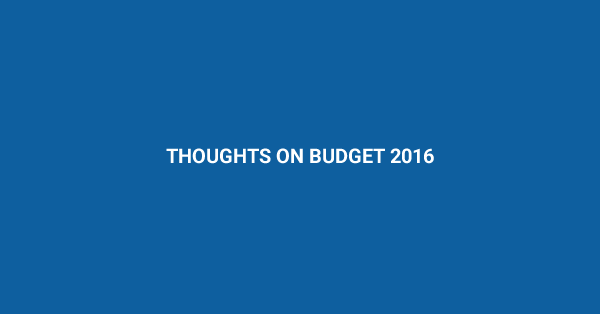This year’s budget takes boring to a whole new level. It contains the bare minimum to keep the media wolves at the door and to set the Government up for election year.
The only real surprises are some money for 750 social housing places in Auckland and an increase in the tax on cigarettes by 10% per year for 4 years. That will see a pack of 20 cost $30 by 2020.
The real disappointment is the lack of funding for Conservation.
Some things you need to know about Budget announcements
Before we look at the spending, there’s a couple of things you need to know.
Firstly Government spending doesn’t get an automatic inflation adjustment – so anything that hasn’t had a funding increase in the Budget has actually had a cut in real terms. In other words costs will have risen, but their spending will be the same.
Secondly, the Government has an interesting habit of announcing funding increases over 4 years. This makes them sound a lot bigger than they really are, which of course the Government wants.
Economic overview
Thanks to tourism and immigration the domestic economy is in pretty good shape. Immigration is expected to peak at 70,000 per year before dropping back. Of course immigration puts more money in the government purse but not in the back pocket of the average person.
Our international trading partners are still in strife, but the outlook for New Zealand is (by comparison) rosy. That is even accounting for a predicted slow recovery in the dairy price over time – which in the mean time could mean a few farms get sold. The Government can look forward to surpluses (small initially but rising to 2.5b by 2018), falling debt (to 20% of GDP by 2020), and maybe even contemplate a promise of tax cuts come election time. Super fund contributions are aimed to restart in 2021.
The budget includes $1.6b of new spending, plus another $500m from revenue (like the cigarette tax hike) and savings elsewhere. Our Finance Minister has held true to his penny pinching style, checking under the cushions and looking under the sofa for every spare dollar. The spending Minister English has allowed really addresses the key political pressures the Government faces. He’s probably spent more than he would like – now he only has $1.5b left in his war-chest for the election year budget.
New Spending
So who are the big winners in Budget 2016?
Innovation has clocked up $761m through a pepper-potted range of grants for science, extra money for tertiary education and some for regional development. The big question here is why we don’t try to recover some of this investment by taking a stake in the companies that receive grants.
A range of public infrastructure is being funded to the tune of $2.1b, which is mainly for new schools and classrooms and an IT upgrade for Inland Revenue.
And there is $652 million for ‘social investment’. Most of this will be spent reforming CYFS – so it isn’t really clear how much children will benefit from the extra spending. The $43m investment in the education of ‘children at risk of not achieving’ looks to be preempting the wider reform of education spending. This is before the Government’s consultation has even begun.
The Government claims that this package will include data-driven investments. An example of this approach is that solo Mums at age 19 are likely to stay on benefits for 18 years and impose a future cost of $218,000 on taxpayers. As we have pointed out, investment is really about building assets, not just reducing liabilities, and the Government needs to be very careful about the measures it uses under this approach. Getting people off benefits and achieving NCEA Level 2 aren’t examples of outcomes that improve people’s lives.
The surprise in this ‘social investment’ package was the extra funding in social housing – $258m probably put in at the last minute to provide 750 social housing places in Auckland. This is clearly a last-minute reaction to the recent pressure faced by the Government on housing and homelessness issues. The announcement yesterday of funding to help people move out of Auckland was clearly not seen as enough of a bandaid.
On Health the Government continued the approach of ensuring health gets the lions share of new spending (apart from superannuation that is), to try to keep cost pressures under control. As usual, that comes at the expense of investment in prevention – GPs will get more money but only to cope with the additional demand they have had from the free visits for under 13’s policy. The long awaited bowel cancer screening programme is here – but only for people over 60.
Finally, the Emissions Trading Scheme two-for-one offer will be phased out by 2019 – some ten years after this ‘temporary’ measure was first put in place.
The Disappointments
Finally, the big disappointments in the budget were around Conservation and public interest broadcasting funding.
Despite the one off increase for the Battle for our Birds, Conservation is not getting an ongoing uplift in their budget to deal with the huge challenges they face. The sole boost they have had is $4m to take care of wilding pines – which will probably not prove to be enough to head off this growing problem.
The budget freeze on Radio NZ continues, the clear decline in public interest journalism elsewhere. It must be time for a rethink of this sector.
Meanwhile there is almost $500m extra for defence and intelligence. Priorities…

